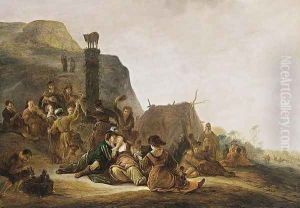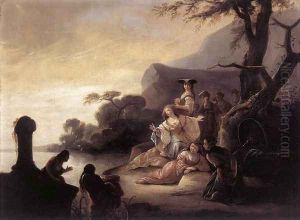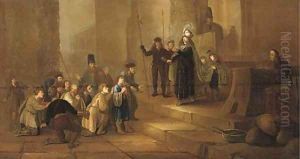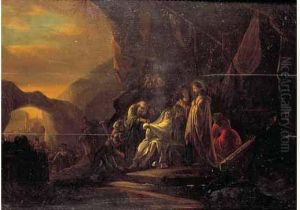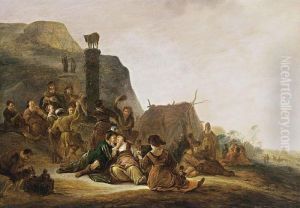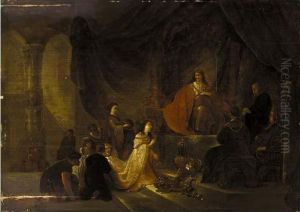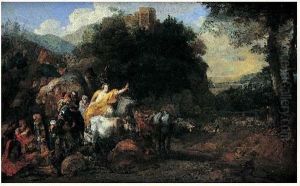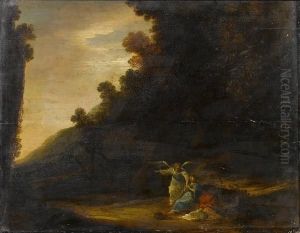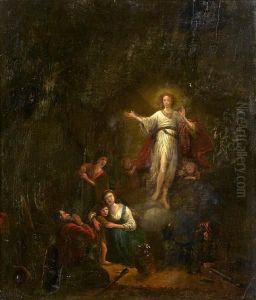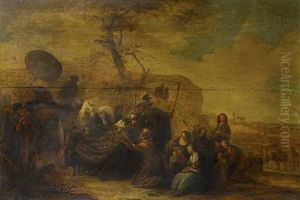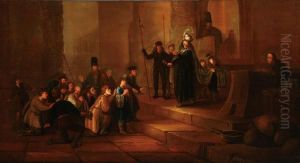Gerrit de Wet Paintings
Gerrit de Wet, also known as Gerrit de Wet the Younger to distinguish him from his father, who had the same name, was a Dutch Golden Age painter renowned for his religious scenes and history paintings. Born in Haarlem, Netherlands, around 1616/1617, de Wet was active during a period that is often considered the height of Dutch painting, which saw the proliferation of genres such as still life, portraiture, landscape, and narrative painting.
De Wet began his artistic training in Haarlem, and his early work was influenced by the likes of Pieter de Grebber, a prominent history painter of the time. He became a member of the Haarlem Guild of Saint Luke, which was the city's painter's guild, an important step for any artist looking to establish a career in the Dutch Republic. His membership in the guild enabled him to sell his works and take on students.
Although not much is documented about de Wet's life, his paintings suggest that he had a penchant for dramatic biblical scenes, often filled with emotional intensity and rendered with meticulous attention to detail. His style evolved over the years, showing the influence of Rembrandt in his later works, particularly in the use of chiaroscuro – the strong contrasts of light and dark to achieve a sense of volume and depth in his subjects.
Despite his talent, Gerrit de Wet did not achieve widespread fame during his lifetime, and much of his work was attributed to other artists after his death in 1674. It was only centuries later that art historians began to properly attribute and appreciate his contributions to Dutch art. Today, his works can be found in various museums and collections, where they are studied for their technical skill and emotional impact.
